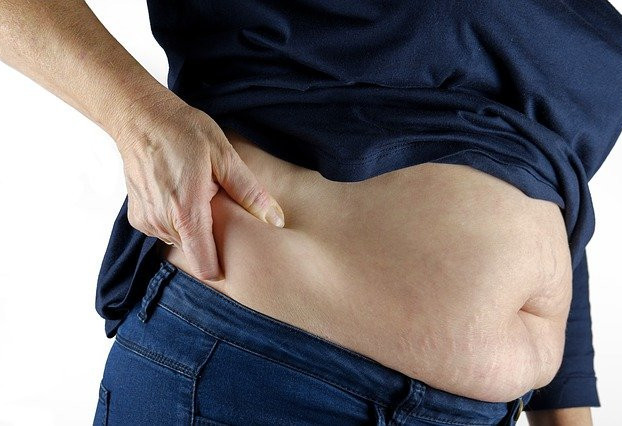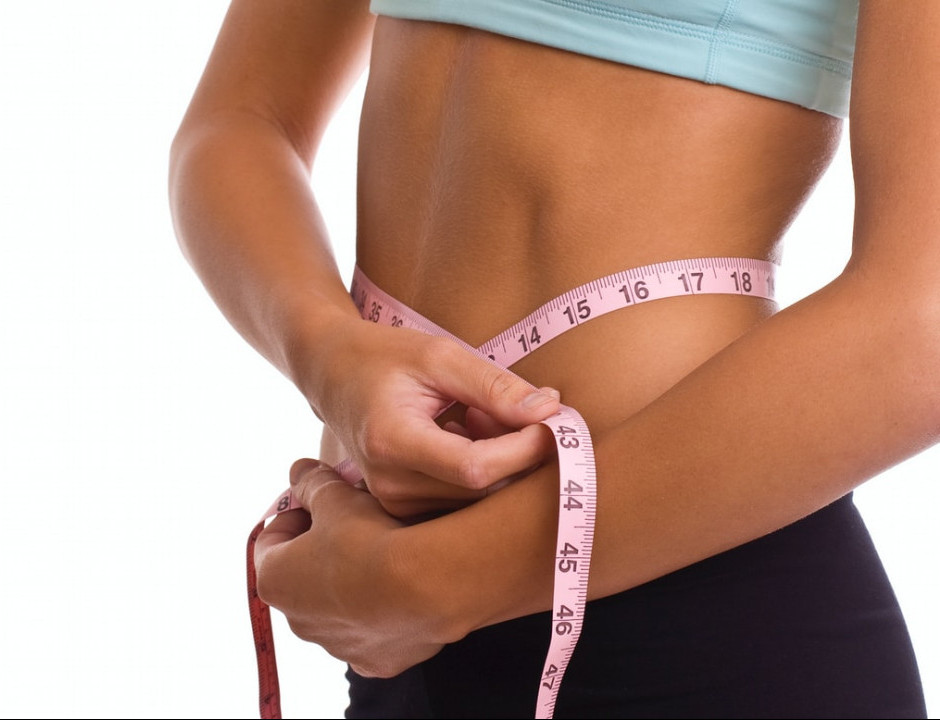
As we age, it can become more difficult to lose weight around our abdomen. Diet, lifestyle and stress all play major roles in how our bodies  look and age. How to lose belly fat in women is a common topic for many females, particularly in later years.
look and age. How to lose belly fat in women is a common topic for many females, particularly in later years.
It can be easier when you are younger to shed that unwanted weight. But after menopause in women, it can become a real challenge.
Everybody has some belly fat which is completely normal. But too much fat in the abdominal region can lead to long term health problems.
This is the visceral fat that is buried deep in your tissue surrounding organs like the liver, pancreas, heart and lungs. Some visceral fat is required to support your organs of course, but too much can lead to issues like type 2 diabetes, hypertension, colon cancer and even dementia.
Visceral fat is dangerous because it is an active type of fat that secretes other substances which can lead to sickness. When the body gains too much weight it begins storing it in strange places like around the heart and other vital organs.
So not only is trying to lose belly fat good for how you look in your jeans, but it’s an important health factor to consider in the long run.
What Causes Belly Fat?
There are three factors that mainly lead to what weight you see on the scale:
- Your age
- How many calories you eat per day
- How many calories you burn per day
This is a basic equation where if you eat more than you burn off, you will start gaining weight. This also includes gaining belly fat.
As we age, we tend to lose muscle mass which is another important component involved with losing weight. As muscle is lost, it makes it harder to burn calories more efficiently. This can make losing weight more difficult.
With women in particular, the loss of estrogen during menopause can also lead to belly fat gain simply due to hormonal shifts.
There may also be a genetic component involved too as to how a woman will carry her excess weight. Have you noticed that some women are an apple shape with weight around their middles, while others tend to look more like a pear shape, carrying weight in the buttocks and thighs?
Check Your Belly Fat
Studies have found that belly fat in particular poses dangerous health concerns. Not only is subcutaneous (under the surface) fat problematic, but the deep visceral fat stored in the belly region can cause many health concerns.
dangerous health concerns. Not only is subcutaneous (under the surface) fat problematic, but the deep visceral fat stored in the belly region can cause many health concerns.
Even women that are considered a normal weight can actually have too high of a BMI (body mass index) due to this visceral fat in the abdomen.
Research has found that a large waistline can lead to cardiovascular disease and premature death. So it’s important to find out how much belly fat you actually have.
One way to do this is by having a CT scan or an MRI.
However, there is a very easy, cost-effective method you can do today. Grab a tape measure and while standing tall, simply measure your waistline around your belly button area. Make sure the tape measure is flat and fits snugly without sucking in your stomach.
Doctors consider the healthiest measurements to be under 35 inches for a woman’s waist and under 40 inches for a man’s waistline.
Even if you are thin looking, you can still have too much belly fat. That’s dangerous. And visceral fat loves inactivity.
So the key to keeping your waistline in check is to keep active. Aim for those 10,000 steps a day. Get your body moving. No matter how simple the activity, just move your body. Every calorie burned is important.
How To Lose Belly Fat In Women – 4 Things To Know
Keep in mind there are 4 things to consider in order to trim your belly fat.
Tip 1 – Exercise
Firstly, you need to get regular exercise.  Health guidelines suggest 150 minutes of moderate exercise per week. This includes things like brisk walking, swimming, dancing and aerobic exercise. I
Health guidelines suggest 150 minutes of moderate exercise per week. This includes things like brisk walking, swimming, dancing and aerobic exercise. I
f you like jogging and high intensity exercise, guidelines suggest 75 minutes per week.
Just make sure you break a sweat and feel your heart rate elevated. Even simple chores like raking leaves, vacuuming and even playing with your kids can ramp up the burn. So get busy now!
Tip 2 – Diet
Secondly, check your diet. What are you eating? And be honest with yourself.
You are not fooling anyone and this is not a competition. Just look at what you are eating and drinking in a day. Upping your fiber intake is a great way to slow digestion and eliminate cravings.
Aim for 10g of soluble fiber per day which can help keep visceral fat at bay once it’s lost. Check your portion sizes, limit sugars and focus on eating plant-based food like fruits, vegetables and whole grains.
These things incorporated with lean proteins and low-fat dairy can really help you step up your game.
Tip 3 – Sleep
Thirdly, get your sleep. No matter how many times you’ve heard it before, it actually is more important than ever to get your sleep.
Studies have shown than people over a 5-year period who got at least 6 or more hours of sleep per night gained less visceral fat than those who got 5 or less.
Sleep may not be the only factor at play in visceral fat gain, but it is an element.
Tip 4 – Manage Stress
Lastly, stress management counts. How you deal with your stress matters a great deal in how much belly fat you have.
With stress comes rising cortisol levels which turn on the fat production in your stomach area. So consider regular meditation, yoga classes, deep breathing, hanging out with a good friend or seeing a counselor to cope with your stress.
Less stress means a slimmer you!
The Takeaway On How To Lose Belly Fat In Women…
How to lose belly fat in women is a common question with many factors to consider. Although there is no one blueprint that fits all, one must take into  consider age, levels of activity, calories consumed, stress levels and sleep time.
consider age, levels of activity, calories consumed, stress levels and sleep time.
When a woman is younger, it is easier to shed pounds simply from a biological aspect.
But during and after menopause, weight gain can become problematic for many women.
That middle-aged roll of fat can become tricky to lose but it is not impossible with the right plan. Be honest with yourself, learn as much as you can about healthy eating and be realistic.
Every day is a new journey with another chance to start over at your goals. Once you have the basic knowledge, you will have all the tools you need to make a daily commitment to yourself for better health.
Get moving, eat better with smaller portions and try to reduce your stress. Start slow and keep consistent to achieve your long term weight loss goals. Always check with your doctor before starting any diet or exercise program.

Leave a Reply